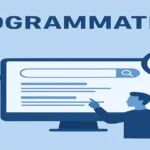Introduction
In today’s digital world, the customer not only wants a good product or service, but he also want every experience to be according to his needs and preferences. Earlier, the method of marketing was very simple – the same message was sent to everyone. But now times have changed.
In this changing era, Hyper-Personalization has emerged as a new and powerful method. In this, not only basic personalization (like sending emails by name) is done, but with the help of AI, Data Analytics, and Machine Learning, content, offers, and services are customized according to the choice, behavior, and needs of each customer.
For example, if you repeatedly look for shoes on an e-commerce website, then that website will show you new shoe offers the next time you log in. Not only this, based on your previous search and purchase data, it will suggest you the products that you may like the most. This is the real power of Hyper-Personalization.
What is Hyper-Personalization?
Hyper-personalization is an advanced marketing method that creates a unique and personalized experience for each customer. It is not limited to just sending emails by name or giving generic recommendations, but it uses AI (Artificial Intelligence), Machine Learning, and Data Analytics to understand the needs, behavior, and preferences of each user.
In simple words:
- Simple personalization = “Dear Rahul, this is your offer.”
- Hyper-Personalization = “Dear Rahul, since you looked at running shoes last week, here is a special discount of 20% on shoes that match your size and style.”
- That is, Hyper-Personalization provides personalized offers and content based on the customer’s previous search history, buying behavior, browsing pattern, location, and real-time data.
Key points of Hyper-Personalization:
- Use of AI and Machine Learning
- To understand the behavior of each customer and predict their future action.
- Real-Time Data Analysis
- Showing relevant recommendations or offers to the user as soon as he perform an activity.
- Customer-Centric Approach
- The focus here is not just on brand promotion but on the convenience and happiness of the customer.
- Seamless Experience
- Whether the customer is on mobile, website or app – he gets a personalized and smooth experience everywhere.
Why Hyper-Personalization Matters?
In today’s time, when every business is present online and customers have thousands of options, just providing a good product or service is not enough. Customers now want an experience that fits perfectly according to their needs and preferences. This is the reason why Hyper-Personalization has now become the biggest need of digital marketing.
1. Customer expectations have changed
- Today’s customer wants to get only the content, offer, or recommendation that matches their need. If he gets irrelevant ads or messages, he quickly loses interest. Hyper fulfills these expectations.
2. Better User Experience
- When a user comes to an app or website and sees only the products or services in which he is really interested, then their experience becomes very smooth and positive. This also increases his trust in the brand.
3. Increasing Engagement and Conversion
- Hyper-personalization gives relevant offers and suggestions to customers. This makes them interact more, spend more time on the site, and the chances of making a purchase also increase.
4. Competitive Edge
- Competition is fierce in every industry. In such a situation, the brand that gives a personalized and unique experience to its customers will stand out from the crowd and will be able to keep customers with them for a long time.
5. Building Customer Loyalty and Trust
- When customers feel that a brand understands their needs and preferences, they feel connected to that brand. This strengthens brand loyalty and long-term relationships.
Key features of Hyper-Personalization
Many advanced technologies and smart strategies are used to make Hyper-Personalization successful. It is not limited to basic personalization, but gives the customer a unique and tailored experience. Let’s understand its main features in simple words:
1. Real-Time Personalization
- The biggest feature of Hyper-Personalization is that it works in real-time. That is, as soon as a user does any activity (such as searching, viewing a product or adding an item to the cart), relevant recommendations and offers are shown to him at the same time.
2. Use of AI and Machine Learning
- AI and ML algorithms analyze the customer’s past activities, search history and behavior to predict what the user might like next. On this basis, the right content or product is shown to him.
3. Data-Driven Approach
- Hyper-Personalization is completely based on data. In this, the browsing pattern, location, device type, purchase history and even social media behavior of customers are analyzed.
4. Omnichannel Experience
- Whether the customer is on mobile app, website, email or social media – he gets consistent and personalized experience everywhere. This seamless experience is the power of Hyper.
5. Behavior-Based Recommendations
- Giving personalized recommendations based on the user’s choice and behavior, such as:
- If a user looks more at electronics products, then show him the latest gadgets.
- If a user repeatedly searches for beauty products, then send him related offers.
6. Customer-Centric Approach
- The main focus of Hyper is not brand promotion but to fulfill the customer’s needs. This is the reason why it increases both customer satisfaction and loyalty.
Case study: Hyper-Personalization success story
Company name (example): A large e-commerce company that sells fashion and lifestyle products.
Problem
- The company sold millions of products and had a huge customer base. But the problem was that:
- Customers were not finding the products they were interested in on the website.
- General recommendations were shown to everyone.
- Email marketing campaigns seemed irrelevant.
- Customers were not spending much time on the website, and sales were falling.
Solution
- The company incorporated Hyper in its marketing strategy. For this, they used AI and Machine Learning tools:
- Data Analysis was done
- Customers’ past purchase history, browsing behavio,r and search data were analyzed.
- Personalized recommendations were given
Real-Time Offers
- If a customer left a product in the cart, he was immediately sent a discount offer on that product.
- Omnichannel Personalization
- Customers were given a consistent and tailored experience across every platform – website, mobile app and email.
Results
- Within just 3 months of implementing Hyper, the company saw amazing results:
- Website engagement increased by 60%.
- Conversion rate increased by 35%.
- Email open rate increased by 40%.
- Overall sales increased by more than 25%.
Learnings
- This case study makes it clear that Hyper not only makes customers happy but is also a game-changer for business growth.
- Showing the customer what he wants to see – this is the key to long-term success.
How to use Hyper-Personalization?
Hyper-Personalization is not difficult to adopt, but it requires the right tools, the right data and the right strategy. Let’s understand step-by-step how any business can use it:
1. Collect Customer Data
- First of all, collect the right data about your customers, such as:
- Their past purchases (what have they bought before).
- Browsing history (which products they look at most frequently).
- Location and device (from where and which device are they visiting).
- Time and frequency (when are they more active).
2. Use AI and Machine Learning Tools
- With the help of AI and ML, you can analyze this data and understand what each customer is interested in and what they can buy next.
3. Apply Real-Time Personalization
- Show the customer the same content or offer at the same time that matches their behavior. Example: If a user is browsing shoes on mobile, then immediately show him suggestions for new arrivals and discounts.
4. Give personalized recommendations
- Give tailored recommendations to the customer everywhere – website, mobile app or email.
Example: Netflix and Amazon Prime recommend movies and shows to each user based on his watch history.
5. Adopt Omnichannel Strategy
- Whether the customer is on the website, on the app, or on social media – he should get a personalized and consistent experience everywhere.
Conclusion
In today’s time, when every customer has many options, the biggest challenge for any brand is to understand its customers and give them the right experience at the right time. Hyper-personalization does this job very well.
It is not limited to just basic personalization, but gives tailored content and offers in real-time according to the behavior, interests, and needs of each customer. The result is that the customer feels a special connection with the brand.
Hyper-personalization not only improves the customer experience but also increases brand loyalty, engagement, and sales manifold.
In simple words, Hyper is not only the need of today but also of tomorrow. The brands that will adopt it will be able to get ahead of the competition.
FAQ
Q1. What is Hyper-Personalization?
Hyper-personalization is an advanced marketing strategy that uses AI, Machine Learning, and real-time data to deliver highly personalized customer experiences.
Q2. How is Hyper-Personalization different from regular personalization?
Regular personalization might include using a customer’s name in an email. Hyper goes deeper by analyzing customer behavior, preferences, and browsing patterns to deliver tailored offers and recommendations.
Q3. Why is Hyper-Personalization important for businesses?
Because customers expect relevant and personalized experiences. Hyper improves user satisfaction, boosts engagement, increases conversions, and builds brand loyalty.
Q4. Which industries benefit the most from Hyper-Personalization?
E-commerce, streaming services, travel, banking, healthcare, and education benefit greatly since these industries rely heavily on user engagement and customer data.
Q5. What technologies power Hyper-Personalization?
AI, Machine Learning, Big Data, Predictive Analytics, and real-time data processing are the main technologies used in Hyper-Personalization.
Curious about smart transportation and digital growth? Head over to Digital Pracer’s blog and explore content that keeps you ahead of the curve!








